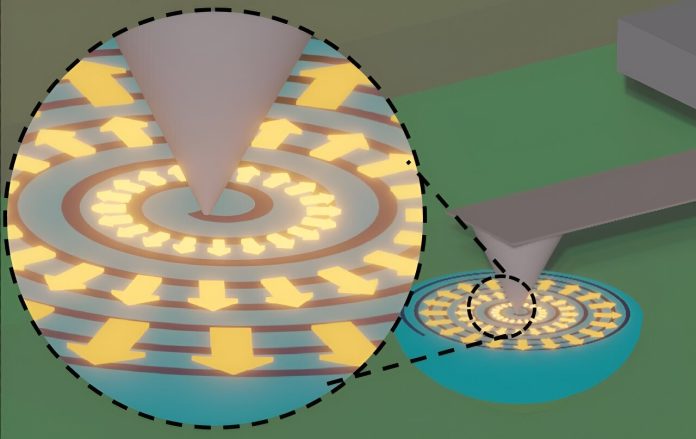
Scientists at the Department of Energy’s Oak Ridge National Laboratory have developed an innovative technique that could lead to major advances in memory storage and computing.
This breakthrough involves ferroelectric materials, which have unique electric properties that can be switched on and off, making them perfect for energy-efficient memory and advanced computing systems.
Their discovery, published in Nature Nanotechnology, could help improve everything from everyday devices to complex technologies tackling global challenges.
The researchers created a method to precisely arrange atoms in ferroelectric materials, which are known for their ability to store and switch electric charges.
These materials are important for developing advanced technologies like neuromorphic computing systems, which mimic how the brain works, and new forms of data storage.
Marti Checa, the project’s lead researcher, explained that manipulating atoms and electric fields within these materials is crucial for developing new ways to store information and create advanced devices.
Their method allows them to rearrange atoms into special structures, called topological polarization structures, that don’t occur naturally.
Polarization refers to how the electric fields inside the material are oriented. By changing the orientation of these fields, the researchers can create materials with new and unique properties. They used a tool like a superfine pencil, called an electric stylus, to alter the electric fields in the material at a very small scale.
This technique is similar to how children draw on magnetic boards, but at an atomic level. This control allows for the creation of materials that are perfect for low-energy, high-speed electronics—critical for future technologies like 6G communication networks.
As technology moves from 5G to 6G, the need for faster and more efficient communication systems becomes essential.
The materials created using this new method could play a key role in making this transition smoother by improving both computing and communication technologies.
Today’s computers rely on a binary system of ones and zeros, but this system is energy-intensive and has limitations in speed and data storage. The new topological polarization structures created by the researchers can switch between different polarization states quickly and with very little energy, making them highly efficient for storing data.
These materials also allow data to be retained without power, offering a significant advantage for future memory storage solutions.
The study also showed that these materials could operate at extremely high frequencies, thanks to their ability to resonate below one terahertz (one trillion hertz). This could help boost the processing power and efficiency of future computers, allowing them to handle more complex tasks at faster speeds than current technology.
One of the most exciting aspects of the study is the researchers’ ability to precisely control the electric and optical properties of these materials, opening the door to the development of new types of electronic and optical devices.
These materials could be used in tunable devices that adjust to changing conditions, making them ideal for advanced computing systems.
The research team also discovered a new way to manipulate superdomain structures—large patterns of electric fields inside ferroelectric materials. This discovery allows them to better control how the materials behave, making them more useful for a variety of high-tech applications.
By studying how ferroelectric materials balance their mechanical and electrical energy, the researchers gained a deeper understanding of how to control these materials more effectively. This balance is important because changing the shape of a material can affect its electrical properties and vice versa.
This new method of creating topological polarization structures provides a way to predict and control the behavior of materials with nanoscale accuracy, making it a major step forward in the field of nanoelectronics.
The team’s work paves the way for more efficient memory storage, faster computing, and other advanced technologies that will shape the future.



